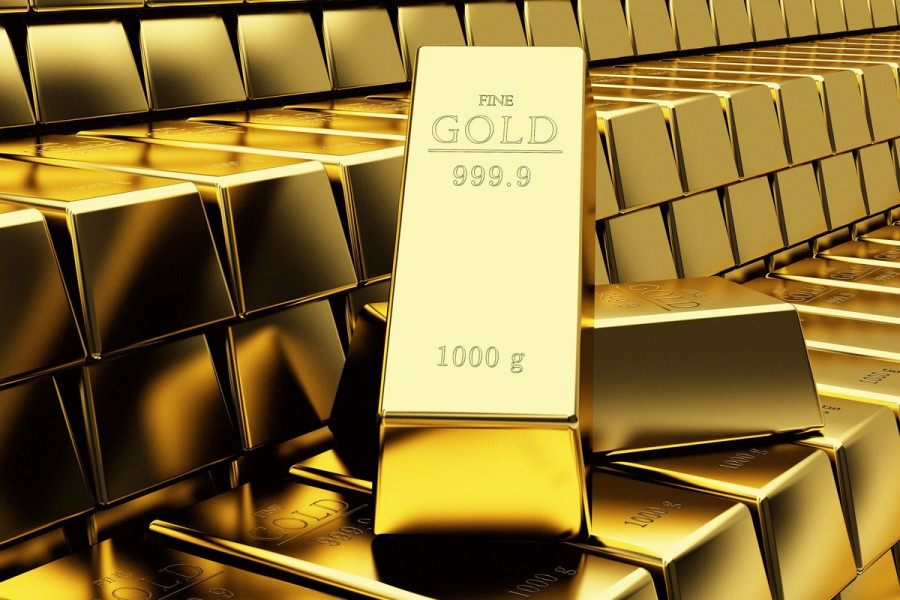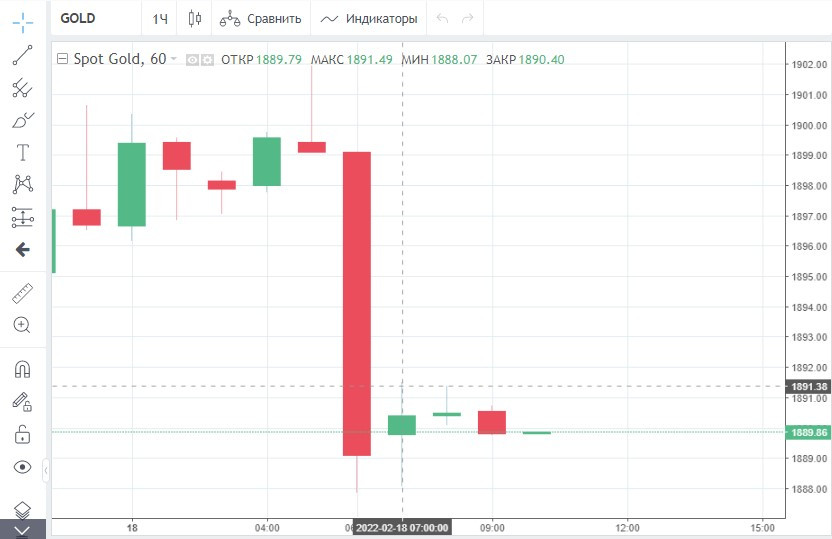

Gold is poised to end its third straight week with gains. It has risen by nearly 3% since Monday. Growing geopolitical tensions were the main trigger for the asset.
This week, Thursday was the most favorable day for gold so far. Yesterday, the precious metal jumped by 1.6% or nearly $30. Gold closed the session at $1,902.
The yellow asset climbed above $1,900 in early June last year. Gold hit an 8-month high due to a good combination of positive fundamental factors.
EU on verge of warThe conflict between Russia and the West over Ukraine is the key driver of growth in the precious metal market this week.
Expectations that Moscow may attack Kyiv any day force investors to flee risky trading instruments and buy up safe-haven assets.
Yesterday, US stock indices fell again. They declined by more than 1%. The reason was another escalation of the conflict between Russia and Ukraine.
On February 17, Russian-backed rebels and Ukrainian forces traded accusations that each had fired across the ceasefire line in the east of Ukraine. This fact could be viewed as a violation of the ceasefire.
"The evidence on the ground is that Russia is moving toward an imminent invasion. This is a crucial moment," US Ambassador to the United Nations Linda Thomas-Greenfield said on Thursday.
US President Joe Biden also stated yesterday that there were clear signs that Moscow was planning to attack. Biden assumed that Russia was likely to prepare a "foreign flag" operation to invade Ukraine.
At the same time, the Kremlin has repeatedly denied planning to attack Ukraine. Earlier this week, Russia's Defense Ministry said that the country was withdrawing some troops from Ukraine's border. On Thursday, however, US intelligence reported on Moscow's military buildup.
Currently, many experts call the protracted tensions between Russia and the West a new Cold War. However, a diplomatic resolution of the conflict is possible.
It was reported last night that US Secretary of State Anthony Blinken and Russian Foreign Minister Sergei Lavrov would hold talks on Ukraine's issue in the EU the following week.
The prospect of resolving the conflict peacefully has returned investors' appetite for risk. On Friday morning, stock prices resumed growth, while gold, on the other contrary, declined.
At the time of writing the article, the precious metal slipped below its 8-month high the day before. It dropped by 0.5% to $1,892.70.

Meanwhile, most analysts are now positive about gold. They expect its further rally if Ukraine tensions continue to escalate.
According to market strategist Michael Boutros, gold can rise by another $20 to $1,923 amid geopolitical risks in the near future before it faces stiff resistance. A breakout above this key level would provide a chance for further strong growth.
US at risk of recessionThis week, accelerating US inflation is another favorable factor for gold. The producer price index rose to 9.7% year-on-year in January. Moreover, the core consumer price index increased to 8.3%, while economists had expected it to rise to 7.9%.
The minutes of the Fed's January meeting on monetary policy were released after hot inflation data. They turned out not as hawkish as the market predicted.
Despite record price growth in the US, which hit a 40-year high in January, Fed officials are not ready to announce a detailed plan for interest rate hikes. They have stated they will revise the terms at each subsequent meeting.
No definite plan to fight inflation was another reason for investors to question whether the US central bank can raise interest rates without crashing stock markets.
Currently, more analysts are inclined to believe that the US will face an imminent recession this year amid the normalization of the Fed's policy.
Strategist Philip Stables predicted that US economic growth would continue to slow in the second quarter, hampered by the Fed's monetary policy tightening.
Recent statistics also indicate significant problems in the US economy. Yesterday, the US Labor Department report was published. It showed an increase in initial jobless claims for the week ended February 12. The indicator rose by 23,000 and totalled 248,000.
Moreover, the latest data on the US housing market turned out to be negative. The number of new home starts, an indicator of activity in the construction sector, fell by more than 4% last month compared to December 2021. The figure was 1.64 million homes per year.
Gold is a hedge against declining economic growth as well as a traditional hedge against inflation. It is common that growing fears of recession and rising inflationary pressures are now keeping high demand for gold. Experts predict it will last until the threat is reduced and the US economy recovers.